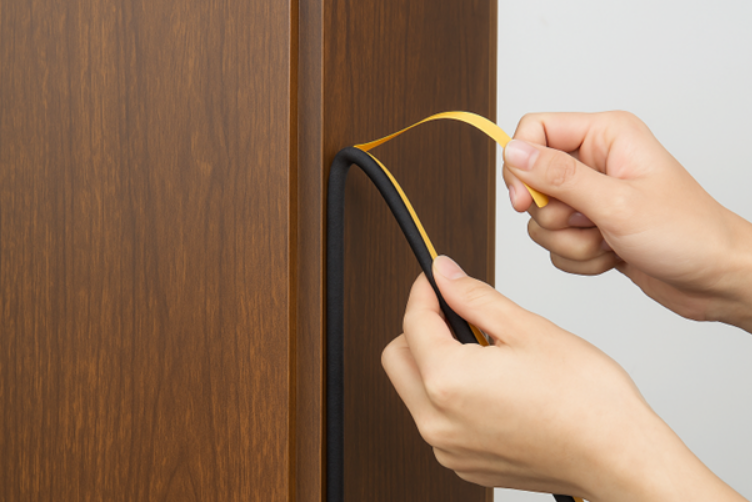As another commercial season gets underway in Youngstown, are you noticing cold drafts around your entrance? Or maybe you’re seeing your energy bills slowly creep up? That’s not just an annoyance for your customers and staff; it’s the sound of your money escaping right out the door. A drafty commercial door is a common problem, but thankfully, it’s one with clear solutions.
Often, the issue isn’t the door itself, but the small, hard-working components that have worn out over time. Here are the three most common culprits we see in the field.
The gasketing or weatherstripping around your door frame is its first line of defense against the elements. Over thousands of open-and-close cycles, this seal can become brittle, cracked, or peel away from the frame.
The Symptom: You can see daylight around the edges of the door when it’s closed, or you feel a consistent breeze.
The Consequence: This creates a direct path for heated or cooled air to escape, while letting in outside temperatures, dust, and even rain.
The Fix: Replacing worn-out weatherstripping is one of the most cost-effective ways to immediately solve the problem of a drafty commercial door. Modern gasketing materials provide a tight, long-lasting seal.

If the problem is at the bottom of your door, the issue is likely the threshold (the metal plate on the floor) and the door sweep (the seal on the bottom of the door). When a door sweep wears down, it no longer makes a solid connection with the threshold.
The Symptom: You can see a significant gap of light underneath the door. On a windy day, you might even hear it whistle.
The Consequence: This gap is a super-highway for air to pass through, causing major energy loss and making the floor near your entrance uncomfortably cold. According to the U.S. Department of Energy, these types of air leaks are a major source of energy loss in commercial buildings and can create drafty commercial door.
The Fix: Installing a new, properly-sealed commercial door threshold and a heavy-duty door sweep ensures a tight seal at the floor, stopping drafts in their tracks.
This is the culprit many people miss. A commercial door closer is responsible for making sure your door not only closes but latches securely every single time.
The Symptom: Your door slams shut, closes very slowly, or—worst of all—stops just short of clicking into the frame, leaving a small gap.
The Consequence: A door that isn’t fully latched is effectively an open door from an energy perspective. This can be a huge, silent drain on your HVAC system.
The Fix: Sometimes a simple adjustment to the closer’s speed settings is all that’s needed. If the unit is old or leaking oil, a replacement is the best course of action to solve your drafty commercial door problem for good.
You don’t have to live with high energy bills and uncomfortable drafts. Addressing these common hardware issues can significantly improve the comfort of your building and lower your operational costs.
If you’re tired of wasting money on heating and cooling, it’s time to take a closer look at your doors. For simple hardware replacements or a brand new, energy-efficient door system.
Contact us to schedule your professional inspection today. Configure your perfect door and get a quote today.